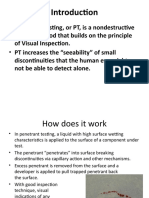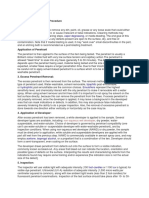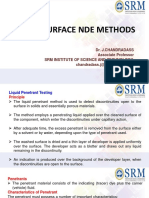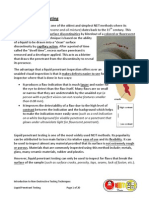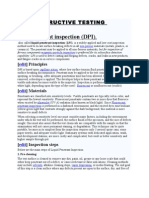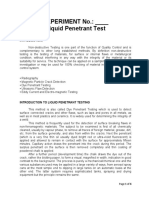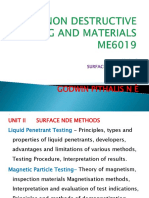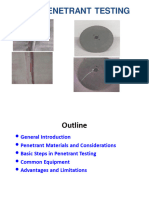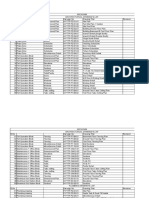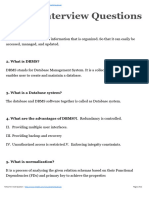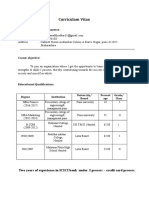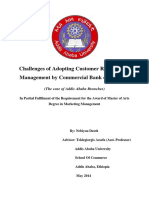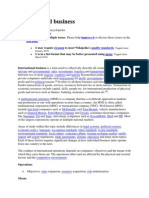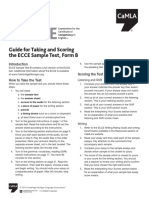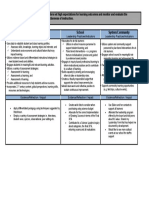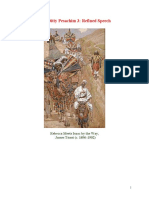0% found this document useful (0 votes)
12 views6 pagesLPT Methods
The document outlines the practical steps and materials involved in non-destructive penetrant testing, including cleaning, application of penetrant, removal of excess penetrant, application of developer, and inspection. It details the types of penetrants, cleaners, and developers used, as well as the methods of testing such as water washable, post-emulsifiable, and solvent removable methods. The document emphasizes the importance of sensitivity and the ability to detect surface discontinuities in various materials, highlighting the advantages and limitations of penetrant testing.
Uploaded by
gaciv13036Copyright
© © All Rights Reserved
We take content rights seriously. If you suspect this is your content, claim it here.
Available Formats
Download as PDF, TXT or read online on Scribd
0% found this document useful (0 votes)
12 views6 pagesLPT Methods
The document outlines the practical steps and materials involved in non-destructive penetrant testing, including cleaning, application of penetrant, removal of excess penetrant, application of developer, and inspection. It details the types of penetrants, cleaners, and developers used, as well as the methods of testing such as water washable, post-emulsifiable, and solvent removable methods. The document emphasizes the importance of sensitivity and the ability to detect surface discontinuities in various materials, highlighting the advantages and limitations of penetrant testing.
Uploaded by
gaciv13036Copyright
© © All Rights Reserved
We take content rights seriously. If you suspect this is your content, claim it here.
Available Formats
Download as PDF, TXT or read online on Scribd
/ 6














